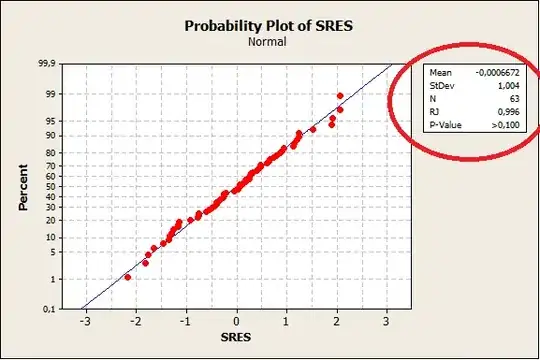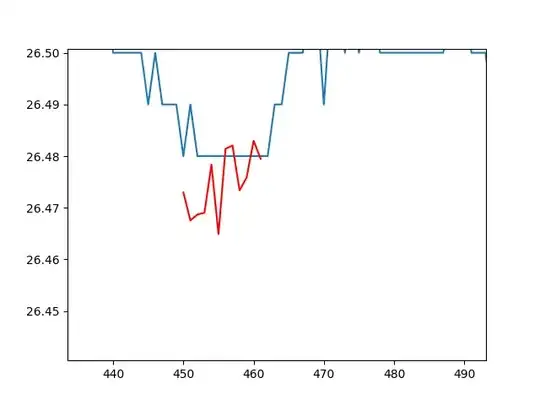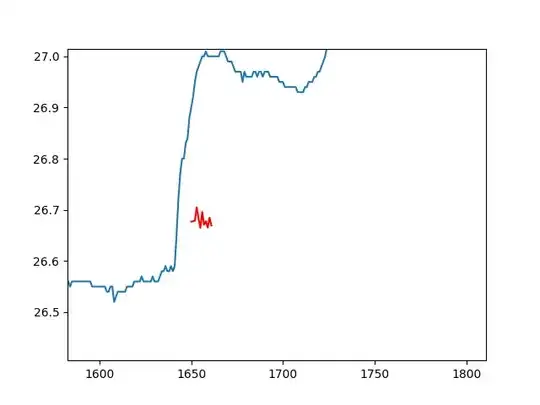I am trying to design a neural network for time series forecasting using LSTM neurons.
I am stuck because the many different configurations that I tried so far are not performing well (actually they perform really really bad).
So I am starting to think that I'm missing something :).
This is the time series that I am using for training. I have a similar time series for testing (the training consists in 2016 data and test is 2017):

What I want is to take T steps of my time series and predict the following P steps, so I converted the problem in a multi-output regression problem in order to solve it using supervised learning: suppose I want to predict the series from time a+1 to time a+P, the features of my dataset are the steps from a-T to a, (by consequence my ys for training are the steps from a+1 to a+P)
As only preprocessing step, I applied different types of scaling (using scikitLearn:
stdscaler = StandardScaler()
minmaxScaler = MinMaxScaler(feature_range=(-1, 1))
robustscaler = RobustScaler()
Sometimes I combined these methods, but I have always got bad results in term of network performance.
After preprocessing and reshaping, I designed the following network:
# create and fit the LSTM network
model = Sequential()
model.add(LSTM(NODES_L1, return_sequences=True, input_shape=(1, SEQ_LEN), stateful=True, batch_size=BATCH_SIZE))
model.add(Activation(ACTIVATION_L1))
model.add(Dropout(DROPOUT_L1))
model.add(LSTM(NODES_L2, stateful=True))
model.add(Activation(ACTIVATION_L2))
model.add(Dropout(DROPOUT_L2))
model.add(Dense(OUTPUT_TIMESTEPS, activation='linear'))
adam = Adam(lr=0.0001)
model.compile(loss='mean_squared_error', optimizer=adam)
callbacks = [
EarlyStopping(monitor='val_loss', min_delta=0.00001, patience=5, verbose=0, mode='auto')
]
model.summary()
model.fit(
trainX,
trainY,
shuffle=False,
batch_size=BATCH_SIZE,
epochs=EPOCHS,
validation_data=(validX, validY),
verbose=2,
callbacks=callbacks)
Two LSTM layers and one dense at the end to predict the time steps. The validation loss and the loss are descending quite well; what I see when I train the network is the following output:
4s - loss: 3.8233 - val_loss: 0.6118
Epoch 2/100
3s - loss: 3.4985 - val_loss: 0.6668
Epoch 3/100
3s - loss: 3.1761 - val_loss: 0.6724
Epoch 4/100
3s - loss: 2.7586 - val_loss: 0.5258
Epoch 5/100
3s - loss: 2.3404 - val_loss: 0.3424
Epoch 6/100
3s - loss: 2.0137 - val_loss: 0.2554
Epoch 7/100
3s - loss: 1.7479 - val_loss: 0.1697
Epoch 8/100
3s - loss: 1.5935 - val_loss: 0.1564
Epoch 9/100
3s - loss: 1.3824 - val_loss: 0.1206
Epoch 10/100
3s - loss: 1.2645 - val_loss: 0.0699
Epoch 11/100
3s - loss: 1.1752 - val_loss: 0.0619
Epoch 12/100
3s - loss: 1.1283 - val_loss: 0.0711
And so on (until early stop kills everything).
After the training step, I try to do some predictions, here the results:




Not even close.
I tried to find the best hyperparamters with hyperopt, here the configuration I used (maybe I am wrong on the dimension of the network):
fspace = {
'SEQ_LEN': hp.choice('SEQ_LEN', range(5, 48)),
'NODES_L1': hp.choice('NODES_L1', range(1, 80)),
'NODES_L2': hp.choice('NODES_L2', range(1, 80)),
'DROPOUT_L1': hp.uniform('DROPOUT_L1', 0.05, 0.8),
'DROPOUT_L2': hp.uniform('DROPOUT_L2', 0.05, 0.8),
'BATCH_SIZE': hp.choice('BATCH_SIZE', range(25, 150)),
'ACTIVATION_L1': hp.choice('ACTIVATION_L1', ['relu', 'tanh']),
'ACTIVATION_L2': hp.choice('ACTIVATION_L2', ['relu', 'tanh']),
'EPOCHS': hp.choice('EPOCHS', range(15, 1000))
}
Where SEQ_LEN is the number of T timesteps used as features.
The question is: how can I improve my process? What I am doing wrong? I double checked my code and all data seems to be loaded correctly, so I think it's a methodological problem.
Thank you for any clue ;)